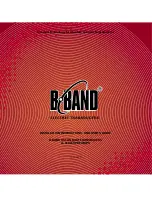
INSTALLATION
SETUP AND PHYSICAL INSTALLATION
3 - 6
WBPEEUI110504A0
•
Locate the pressure inputs in accordance with standard
practice for gas, liquid, and vapor flow rates.
•
For liquid flow measurements, be sure there is no trapped
air or gas in the pipes.
•
For liquid flow measurement, mount the transmitter below
the primary element. Avoid high points and slope all hori-
zontal lines at least 83 millimeters per meter (one inch per
foot) downward toward the transmitter.
•
For liquid flow measurements, if the primary element is in
a vertical pipe, provide drip pots at the low points.
•
For gas flow measurements, mount the transmitter above
the primary element to evacuate the condensates in the
connecting pipes. Slope all horizontal lines at least
83 millimeters per meter (one inch per foot) upward toward
the transmitter.
•
For wet gas flow measurements, be sure the pipes are
filled. Install drip pots at the low points.
•
For flow measurements of condensable vapor, use conden-
sate pots. Mount these pots on the pipe connections or on
the flanges of the pressure connections so that the longitu-
dinal axis of the pot is horizontal and its output toward the
valve is directed vertically downward. Be sure the pots are
at the same level.
•
Provide drip pots (or condensation pots) along the entire
course of the connecting pipes when impurities are present
in the vapor or liquid in the pipes.
•
The piping between the primary element and the transmit-
ter must transfer the process pressure at the pipe or flange
taps to the transmitter.
Possible sources of error in this pressure transfer are:
•
Leaks.
•
Friction loss, if continuous purging is used.
•
Trapped gas in a liquid line.
•
Trapped condensates in a gas line.
FLOW MEASUREMENTS
Refer to Figures
, and
for installation examples of
transmitters used to measure liquid, gas, and vapor flow.
Содержание Platinum standard Series
Страница 1: ......
















































